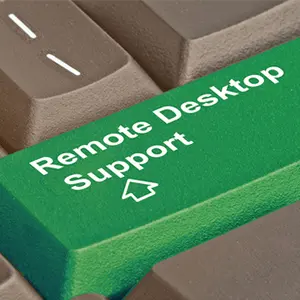How to Protect Remote Desktop Connection?
Whether we like it or not, Remote Desktop Connection is now becoming a target ground for malicious threats and online attacks. This comes with the growing number of people using Windows Remote Desktop connection to remotely administer all Windows server systems within their local networks.
Secure Remote Control: However, if you’re asking yourself the question “How do I protect my remote desktop connection?” then know that the answer to it is quite simple. Today, we’ll take a look at the different security tips on how you can protect your own remote desktop connection.
Secure Remote Desktop Software
Since Windows Remote Desktop is one of the easiest methods in terms of managing Windows servers, it has become the recent target of modern-day hacking. Although it has security features that protect your device and network from being attacked, still, these features aren’t enough to cope with how advanced today’s hacking is.
According to Threatpost, three healthcare organizations that used Microsoft Remote Desktop had their databases compromised by hackers through the vulnerabilities of the companies’ remote desktop protocol (RDP) implementations. As a result, 655,000 healthcare records across Georgia, Farmington, Missouri, and Central/Midwest United States were sold on the dark web.
What is Secure RDP?
The Federal Bureau of Investigation (FBI) has also warned about remote desktop hacking, and how big of a threat it is to your organization. As reported on the website Small Business Trends, these RDP attacks have been increasing since mid to late 2016, and are aiming to carry out unwanted activities such as gaining unauthorized access to your remote access system and network.
Best Tips to Protect Remote Desktop Connection
Secure Remote Control: To answer your question "How to Protect Remote Desktop Connections?" then consider some of the security tips listed below:
1. Use strong passwords
One way of initiating security for your remote desktop connection is by generating a strong password. This will serve as the first line of defense of your organization’s RDP against any unwanted attacks and threats. Make it compulsory for all users who have access to secure remote desktop connection to be required a password when accessing your system‘s RDP. According to Berkeley, your password must contain at least one numeric character and one special character in it.
2. Update your software
Make sure that you are running the latest version of your Microsoft RDP for both the client and server software. You can do this by enabling your Microsoft Updates. Since older RDP versions are sometimes incapable of keeping up with high encryption and are usually more flawed than their updated counterparts, you need to make sure that your RDP is up-to-date and has the latest security features.
3. Limit access using firewalls
You can actually limit access to your RDP using a Windows firewall. This will restrict any connection attempts from IP address that is unknown to your scope. Listed below are the necessary steps you need to follow when scoping your RDP port (as cited on Liquid Web’s website):
- On the Windows search bar, type in Windows Firewall
- Click on Windows Firewall with Advanced Security
- Click on Inbound Rules
- Find a rule labeled RDP
- Double-click on the RDP rule
- Click on the Scope tab
- Include your up-to-date IP address in the list of allowed Remote IPs
- Click on the radio button for These IP Addresses
- Click OK
4. Enable Network Level Verification
One way of securing your remote desktop connection is by enabling network level verification. This method provides a level of authentication first before you can establish a remote desktop session. Windows 7, 8, and 10 all offer NLA or network level authentication by default.
5. Limit users who can log in using remote desktop
Though all administrators can use remote desktop, it’s not necessary for them to have access to it especially when they don’t need to. If remote desktop is not being used to administer system and networks, then it’s best for you to remove the administrative access temporarily.
6. Use two-factor authentication on highly sensitive systems
Two-factor authentication or TFA is another way of enhancing the security protection of your secure remote desktop connections. According to Devolutions, TFA provides stronger user authentication by merging two different login components. These components usually consist of the user’s password and key Fob or smartcard. Since it requires two factors for authentication, any unauthorized access will less likely be able to provide both of the required identifications.

